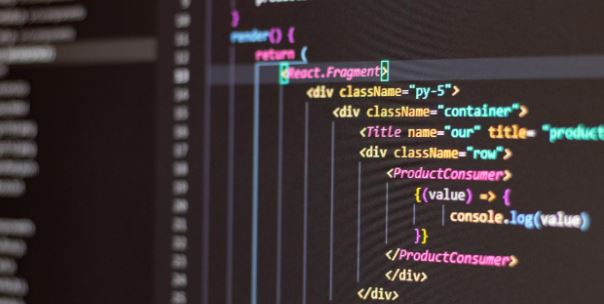With the emergence of COVID-19, businesses are shifting wherever possible to remote work. Estimates predict that up to 56% of the U.S. workforce could be compatible with remote work. This represents an open world for recruiters no longer limited by geography.
With a broader platform to seek out employees, recruiters must prepare themselves to process an increased number of candidates and applications. Algorithm-driven hiring systems can make that process exponentially easier.
But what exactly is algorithm-driven hiring? And should your business really be using it? There are benefits and drawbacks to using automated assistance in the hiring process. We’ll explore these here so that you can make more informed decisions for your employment systems.
Algorithm-Driven Hiring Explained
Algorithm-driven hiring consists of using an artificial intelligence program to analyze a database of resumes and compile a shortlist. This method can be highly effective in narrowing down candidate options quickly.
Artificial intelligence in the hiring process offers assistive tools to filter and accumulate a shortlist of potential candidates. This can streamline the process and be highly beneficial for any employer, making it a staple of modern job search and hiring platforms.
LinkedIn, for example, commonly integrates algorithmic processes to match candidates to jobs and vice versa. With 690 million profiles on LinkedIn, the ability for a recruiter to find best fits through an algorithm is all but essential in today’s digital landscape.
AI in the hiring process works much the same as it does for B2B marketing. By pairing keywords to search algorithms, marketers better find businesses that need their products and services. In hiring, recruiters use algorithms to thoroughly vet a candidate profile for ideal traits that match up with company values and needs. Both processes require the use of data analytics and semantic pairing to create perfect matches.
Using AI in algorithm-driven hiring offers substantial benefits to hiring managers. But no system is perfect. Decision makers should understand both the benefits and drawbacks of algorithmic hiring practices before integrating such a system for their own purposes.
The Benefits
For the COVID-19 workplace, algorithm-driven hiring practices have a lot to offer. The digitized process, for one, allows for candidate vetting of a large applicant pool without face-to-face contact. Meanwhile, the automated aspects of such a system make for faster hiring and higher quality matches.
These benefits can be the right fit for a variety of businesses. We break them down here to better help you understand if they’re the right fit for yours.
- Digitized for safety and sustainability
Automated systems offer the logistical advantage of smart analysis while providing a safe and contactless process. Recruiting amid a virus outbreak makes full digitization of the hiring process is all but necessary.While the trend in hiring already shifted towards paperless online applications, integrating algorithmic-based hiring tools make a fully digital process feasible. In turn, this allows hiring managers to reduce paper use and streamline workflow for enhanced sustainability.
- Faster hiring
Automation offers speed. With an algorithm-driven hiring system, hiring managers no longer have to spend valuable work hours sifting through resumes and applications to align keywords with company needs and values. Such a system does that work for you, drawing the best matches to a shortlist which a hiring manager can then process for the next steps.Ultimately, automation in hiring leads to getting workers on the job more quickly. After the pandemic caused millions of people to lose their positions, getting to work faster is a highly desirable benefit for employees and employers alike. - Quality matches
Pandemic concerns and the changing shape of the workforce require hiring remote employees. For any business where this is an option, algorithm-based hiring practices are highly recommended. Regardless, however, the ability of such technology will help your business find quality matches.With semantic filtering and AI-learning, an automated system analyzes a database of resumes to match candidates to open positions. Facing broad pools of highly qualified candidates from all over the nation, hiring managers can use algorithmic techniques to pair their options down to only the most qualified. - Potential discrimination avoidance
Finally, the use of an algorithm in hiring can reduce the possibility of discrimination occurring in the workplace. By looking at only how a resume matches job qualifications, an algorithm won’t demonstrate the prejudice that a human might in looking over other provided data.Built and integrated correctly, AI in hiring could help create a more equitable workplace.
Timeliness and efficiency are only some of the many benefits offered by algorithm-driven hiring practices. As the world’s industries shift towards more remote workplace options, it only makes sense to integrate a system that can better qualify candidates en masse no matter their geographical location.
Algorithmic hiring does come with challenges and potential problems, however, that may make such a system incompatible with your business model.
The Drawbacks
While not many, the drawbacks of AI and algorithm-based hiring systems can limit the provided benefits and cause errors in the process. Considerations include:
- Risk of AI missing an ideal candidate
AI semantic matching can effectively find candidates who know how to write an AI-friendly resume. Unfortunately, however, this doesn’t mean every ideal candidate. Using an algorithm, you run the risk of missing out on an exceptional candidate who may have desirable elements of their resume or job experience left out by the AI filtering. - Potential for built-in discrimination
When Amazon attempted to build an algorithm to assist in their hiring practices, the project had to be canned due to discrimination demonstrated by the AI. Unfortunately, the system was modeling the ideal candidate based on technical engineers already employed—a disproportionately male selection. As a result, the algorithm tied a male identity to desirability and downgraded female resumes.While AI technology has the potential to combat this kind of discrimination, it takes careful awareness to ensure the algorithm isn’t perpetuating inequitable scenarios with a learned bias. - Liable to reduce the diversity of selected candidatesAs seen in the Amazon example, when an AI learns from a given data selection, it tends to emulate the traits of that data set. Even if programmers write out discriminatory features, this could lead to a lack of diversity in the workplace.AI filtering for selected experience will select candidates based only on that experience. This could mean missed opportunities for a more diverse pool of candidates that may bring new and innovative ideas to the workplace.
Algorithm-driven hiring has the potential to save time and get qualified candidates working faster. Under the right circumstances, it can even prevent discrimination and biases that bleed into a human-only hiring experience. However, it can go the other way as well. The risks in using an algorithm can mean reinforcing built-in bias and potentially missing valuable talent.
For businesses looking for specific experience over a broad talent pool, AI algorithms might suit your needs perfectly. If you’re looking for a more exploratory process, however, manual analysis might still be your best bet.
Algorithms can smooth and streamline any hiring process, but ultimately, the right candidate will be determined by human calculation and intuition.














